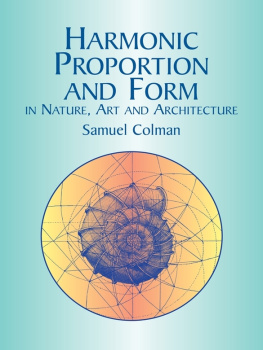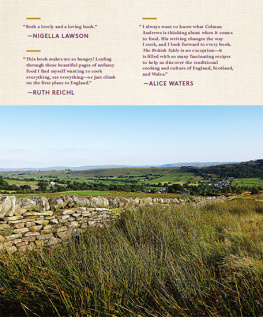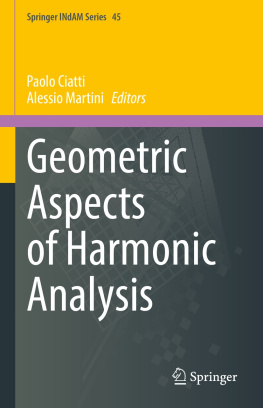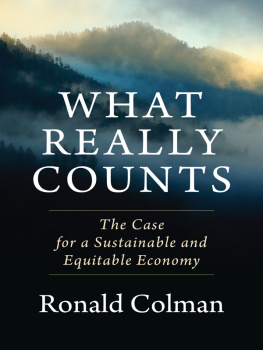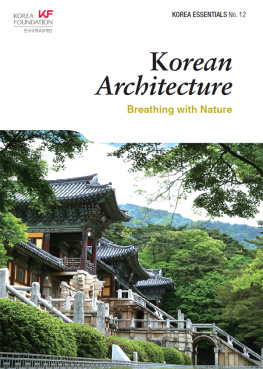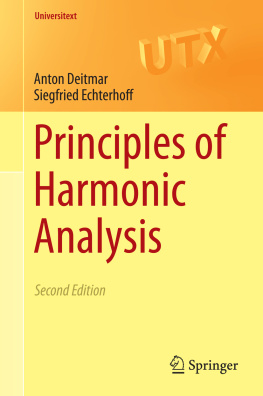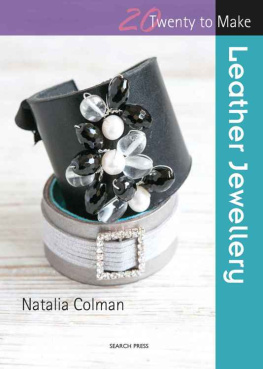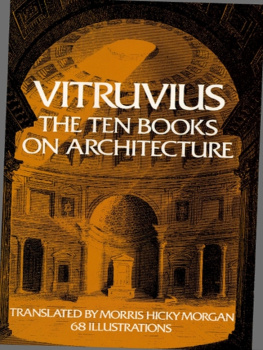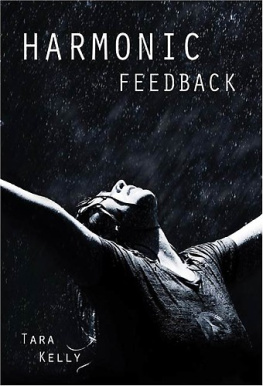Samuel Colman - Harmonic Proportion and Form in Nature, Art and Architecture
Here you can read online Samuel Colman - Harmonic Proportion and Form in Nature, Art and Architecture full text of the book (entire story) in english for free. Download pdf and epub, get meaning, cover and reviews about this ebook. year: 2012, publisher: Dover Publications, genre: Romance novel. Description of the work, (preface) as well as reviews are available. Best literature library LitArk.com created for fans of good reading and offers a wide selection of genres:
Romance novel
Science fiction
Adventure
Detective
Science
History
Home and family
Prose
Art
Politics
Computer
Non-fiction
Religion
Business
Children
Humor
Choose a favorite category and find really read worthwhile books. Enjoy immersion in the world of imagination, feel the emotions of the characters or learn something new for yourself, make an fascinating discovery.
- Book:Harmonic Proportion and Form in Nature, Art and Architecture
- Author:
- Publisher:Dover Publications
- Genre:
- Year:2012
- Rating:4 / 5
- Favourites:Add to favourites
- Your mark:
- 80
- 1
- 2
- 3
- 4
- 5
Harmonic Proportion and Form in Nature, Art and Architecture: summary, description and annotation
We offer to read an annotation, description, summary or preface (depends on what the author of the book "Harmonic Proportion and Form in Nature, Art and Architecture" wrote himself). If you haven't found the necessary information about the book — write in the comments, we will try to find it.
Samuel Colman: author's other books
Who wrote Harmonic Proportion and Form in Nature, Art and Architecture? Find out the surname, the name of the author of the book and a list of all author's works by series.
Harmonic Proportion and Form in Nature, Art and Architecture — read online for free the complete book (whole text) full work
Below is the text of the book, divided by pages. System saving the place of the last page read, allows you to conveniently read the book "Harmonic Proportion and Form in Nature, Art and Architecture" online for free, without having to search again every time where you left off. Put a bookmark, and you can go to the page where you finished reading at any time.
Font size:
Interval:
Bookmark:
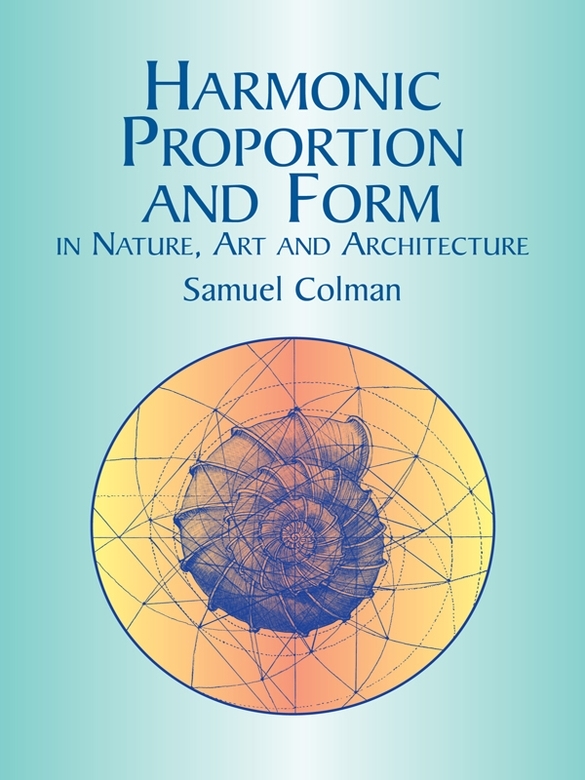
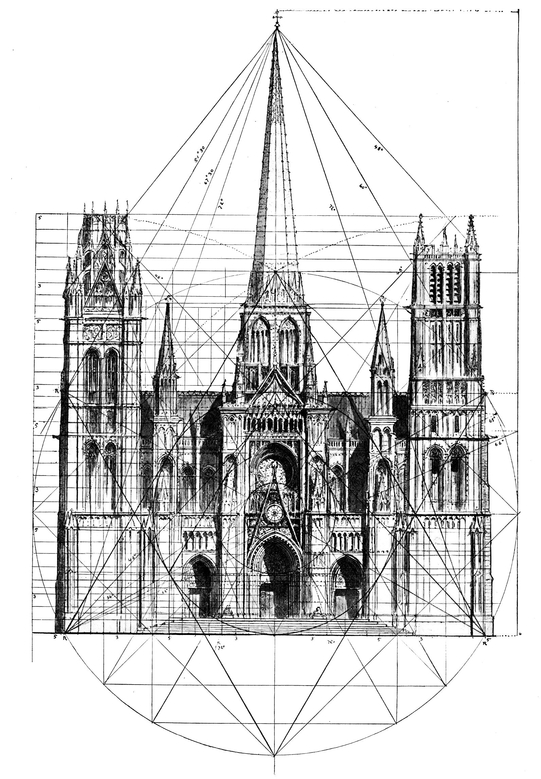
Design for Facade of a Cathedral.-Frontispiece
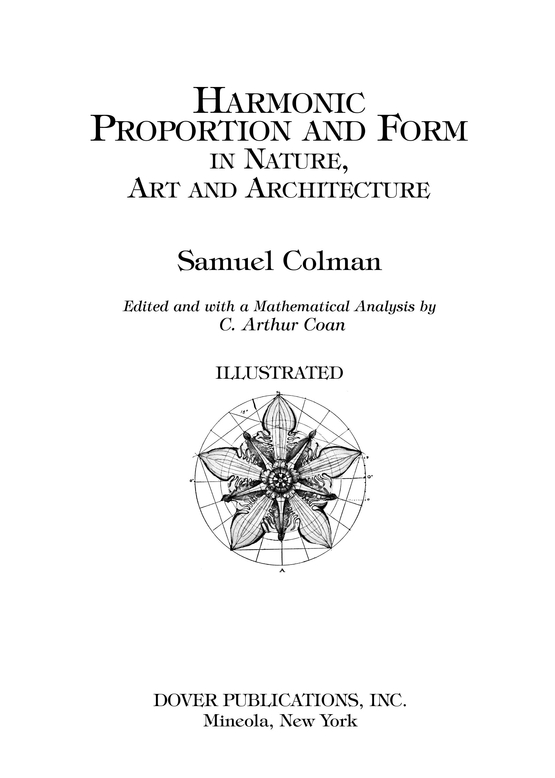
To My Son
Bibliographical Note
This Dover edition, first published in 2003, is an unabridged republication of the work originally published in 1912 by G. P. Putnams Sons, New York and London, under the title Natures Harmonic Unity: A Treatise on Its Relation to Proportional Form. (The running heads in this reprint reflect the original title.) All the books illustrations are by the author.
Library of Congress Cataloging-in-Publication Data
Colman, Samuel, 1832-1920.
[Natures harmonic unity]
Harmonic proportion and form in nature, art, and architecture / Samuel Colman ; edited and with a mathematical analysis by C. Arthur Coan.Dover ed.
p. cm.
Originally published: Natures harmonic unity. New York ; London : G.P. Putmans Sons, 1912.
9780486162195
1. Proportion (Art) 2. ArchitectureComposition, proportion, etc.
3. Mathematics in nature. I. Coan, Clarence Arthur, 1867-1934. II. Title.
N7431 .C65 2003
701.8dc21
2002041013
Manufactured in the United States of America
Dover Publications, Inc., 31 East 2nd Street, Mineola, N.Y. 11501
M ANY years ago I became profoundly interested in the study of the laws governing proportional form, both in Nature and in the arts and sciences, and the further these investigations were pursued the firmer became the conviction that the laws of proportion, as exemplified in Nature, were startlingly uniform, whatever might be the complexity of the application. In the course of these investigations covering a vast number of Natures forms and phenomena, and of the laws governing proportional form, the crystal was found to be their most perfect interpreter, but in the flower, the shell, and many other forms of varying origin or organism, the same constructive principles were recognized, and these it will be my endeavor in this work to explain. As these principles are the fundamental elements by which Nature creates harmony, correlating the parts of her form-compositions into a perfect whole, they must be of interest to the student of beauty and of use to the professional artist. Many of these laws were unquestionably among the valued and guarded secrets of the Masonic Order and of the ancient guilds, and as time went on were, unfortunately, guarded not wisely but so well that for generations they have been lost to the use not only of the world, but to those very architects and masons who most treasured them as well.
It is upon the application of these same ultimate principles of harmonic proportion, governing every natural formation, organic or inorganic, to music, sculpture, painting, and above all to architecture, that consciously or unconsciously man has laid the lasting foundation of all form-beauty in art; and only by the recognition of these principles can we hope to deduce intelligible and universal laws governing the fundamental Harmony of Nature.
In this investigation I have received much help from Mr. Jay Hambidge, the artist, whose work on the proportions of the Parthenon was so warmly recognized by the Hellenic Society of London, and who was among the first students to disclose the true symmetry of shells, and to call attention to the binary principle of Nature.
To Professor Tyndall I owe my knowledge of polar force, which he describes in his lectures on Light, revealing its influence on angular magnitude, lessons of lasting value to the architect as well as to the artist.
I am also much indebted to the writings of D. R. Hay of Edinburgh, who, like Hambidge, gives attention to the binary principle, or the law of octaves, declaring it to be as important a factor in form-composition as in the science of music. He also called my attention to the value of mathematical curves in formal art as well as applied to the human figure.
Professor Raymond of Princeton University, in his remarkable book on Proportion. and Harmony of Line and Color, tells us many truths in his absolutely sound treatise on the theories of this subject, disclosing the influence of the laws of repetition, contrast, variety in unity, etc., on art; and Joseph Gwilt, the English architect, has added greatly to our knowledge of the principles of proportion, which he describes at length in his work On Architecture.
The combined works of these writers leaves little to be desired for one seeking information on the subject, and it might almost be felt that there is small need for further words to illumine it. My purpose in adding to these, however, is that I may adduce proofs where heretofore only theories have been advanced, since the above authors say but little of Natures laws in relation to her forms of growth and production, applying their theories to buildings or other works of art, considered most perfect. Therefore when Gwilt, for example, declares that the square and the cube have been the fundamental forms in past ages for the just development of proportional spaces in art, the words do not impress the mind as of vital value, since no causes or principles of Nature are forthcoming. But the laws of Nature should be the basic element for all theories, and it is chiefly with these laws that I have to deal.
Of late a new light has arisen on the horizon, for the works of Prof. A. H. Church, of Oxford, the distinguished botanist, have disclosed more truth in the relations of plant-growth to proportion than any other of the numerous writers on botany. The principles governing this growth are clearly described in his work on Phyllotaxis in Relation to Mechanical Laws, and it is from this source that much of the material in the chapter on botany is derived.
All of the above men have produced theories which not only stir the imagination but also illuminate the pathway leading to a just understanding of Nature.
S. C.
NEW YORK, December 1st, 1911.
P ROPORTION is a principle in Nature which is a purely mathematical one and to be rightly interpreted by man through the means of geometry; therefore geometry is not only the gateway to science but it is also a noble portal opening wide into the realms of art. Still to a great majority of artists, and to the world at large, the effort to relate science with art is now looked upon with the greatest disfavor and even repugnance, and this accounts in a measure for the overwhelming percentage of immature work which characterizes all branches of art in our times. The architect, the sculptor, the painter, etc., each places too much confidence in what he is pleased to call his feeling or genius, without considering the fact that this feeling or genius would not only become more profound, but capable of a larger expression, were the mind endowed with fuller knowledge of the laws of beauty. Furthermore the eye becomes better trained under the influences of the exact study of geometry, and thus the student is able more readily to recognize and more justly to appreciate the various charms of Nature.
Analysis discloses the fact that the marvellous symmetry which characterizes the crystal has its exact counterpart in the formation of the flower and the shell; while an examination of the masterpieces of art in the past ages clearly shows that the men who produced them were conversant with those geometric principles which lead to unity of expression; and just in proportion as these artists were masters of this knowledge and imbued with this spirit did their resultant buildings, statues, or pictures become ideal in character and worthy the admiration of all the ages.
Font size:
Interval:
Bookmark:
Similar books «Harmonic Proportion and Form in Nature, Art and Architecture»
Look at similar books to Harmonic Proportion and Form in Nature, Art and Architecture. We have selected literature similar in name and meaning in the hope of providing readers with more options to find new, interesting, not yet read works.
Discussion, reviews of the book Harmonic Proportion and Form in Nature, Art and Architecture and just readers' own opinions. Leave your comments, write what you think about the work, its meaning or the main characters. Specify what exactly you liked and what you didn't like, and why you think so.

